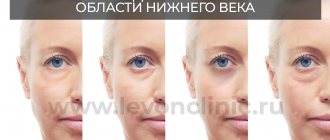Both physics and chemistry study a phenomenon that helps explain why certain particles are visible at certain times. This phenomenon is known as the Tyndall Effect. This physical phenomenon was studied by Irish scientist John Tyndall in 1869. Since then, these studies have found numerous applications in the fields of physics and chemistry. And the fact is that he studies some particles that are not visible to the naked eye. However, because they can reflect or refract light, they become invisible in certain situations.
In this article, we will tell you everything you need to know about the Tyndall effect and its importance to physics in chemistry.
What is the Tyndall effect in cosmetology?
If the dermal filler is injected too superficially, the hyaluronic acid may bleed through the skin. A similar situation arises when the cosmetologist incorrectly calculated the amount of the substance. In the latter case, the excess volume of hyaluronic acid can be visible, forming the effect of swollen hematomas under the skin.
Both situations in aesthetic medicine are called the “Tyndall effect.” This side effect can appear either immediately or several days after the intervention. People with thin skin and older women are most prone to this effect. With age, a person’s skin becomes thinner, so a cosmetologist should always take into account the patient’s age.
The nasolacrimal groove is the most susceptible area. The Tyndall effect is almost impossible to disguise with decorative cosmetics, because the skin darkens and swells very much. This side effect spoils the appearance of girls who turn to a specialist to improve their skin condition or facial contour.
When contacting a cosmetologist, you need to read reviews about his work in advance. Otherwise, unpredictable results may occur. Most often, the Tyndall effect occurs due to the inexperience of the technician or poor quality materials used during injections.
Without the intervention of a specialist, the excess volume of filler will dissipate in about 2-12 months - it all depends on the severity of the side effect and the individual characteristics of the body.
Don't miss the most popular article in the section: Hyaluronic acid in tablets. Benefits, how to take, reviews from doctors and effectiveness.
Causes of the Tyndall effect pathology
The Tyndall effect in cosmetology usually occurs in 4 cases:
- The specialist introduced the filler too superficially, which is why it can be visible through the skin.
- The wrong amount of hyaluronic acid was injected, so excess fluid forms a dark swelling.
- Using a low-quality drug.
- Failure to comply with post-procedure care rules.
Contour plastic helps you look younger, so these side effects bring a lot of inconvenience. Darkening and swelling may appear immediately or throughout the day. An experienced cosmetologist observes the patient after the injection of hyaluronic acid for about 1 hour and prescribes a second appointment after 2 days to ensure a good result of the procedure.
The sooner a specialist notices the Tyndall effect, the easier it is to eliminate it. Only an experienced doctor will be able to correctly calculate the depth of injection, as well as the volume of filler. In areas where the skin is particularly thin, a specialist must control the depth of injection of cosmetic products.
Before the procedure, the doctor must study all factors that may affect the result:
- Skin condition.
- Face contour.
- Medications taken by the patient.
- Allergic reactions to drugs.
- Diseases.
- Age.
Taking into account all the individual characteristics of the client, as well as using the correct method of introducing fillers, the cosmetologist will be able to avoid the occurrence of various complications. The patient is required to strictly follow all doctor's recommendations.
Signs of pathology
The Tyndall effect in cosmetology can be determined independently by studying the signs of pathology. During the procedure or a few days after it, the patient may experience bumps with dark blue liquid at the injection site. Visually they resemble hematomas.
Aesthetically, this effect creates many inconveniences. Moreover, if this side effect is not dealt with, it can last for about 1 year. There are cases where the Tyndall effect did not go away on its own for about 2-5 years.
Some patients note that in addition to visual discomfort, they experience the following symptoms:
- Nausea.
- Weakness.
- Dizziness.
- Low pressure.
But usually these signs disappear within a day. As experts note, this is most likely due to poor tolerability of the drug. The subcutaneous bumps at the site of injection of hyaluronic acid have a black-blue tint. You should consult a doctor immediately as soon as the first signs of the Tyndall effect are noticed.
Most often, this side effect occurs in places where the skin is especially thin, for example, under the eyes or the area of the nasolacrimal groove.
This is due to the fact that in these areas of the skin there is practically no subcutaneous fat and capillaries are closely located. As we age, elastic fibers break down, causing the skin to become thinner. The older the patient, the higher the likelihood of side effects.
Publications: Other (categorizer)
| Tweet |
- … He began to think what was what.
- Apparently, the light is afraid of torment.
- So the flour is perfect
- So that the wave diffracts!
- All kinds of dust, and suspension, and turbidity
- A beam of light can collapse...
- From “Ode to Tyndall” ( E. Nickelsparg)
Element "AIR"
An apple fell on Newton, the Chinese admired the drops on lotus flowers, and John Tyndall, probably walking through the forest, noticed a cone of light. Fairy tale? Maybe. But it is in honor of the last hero that one of the most beautiful effects of our world is named - the Tyndall effect. Why is it beautiful - judge for yourself!
This is an optical effect that occurs when a light beam passes through an optically inhomogeneous medium. Typically observed as a luminous cone visible against a dark background. What is an optically inhomogeneous medium? In this case, dust or smoke, which is formed by colloidal particles that form aerosols. The size of the particles does not matter, because even nanoparticles in the atmosphere, be it particles of sea salt or volcanic dust, can cause such a beautiful spectacle. Studying light, Tyndall is rightfully the founder of fiber-optic communications, which have already become vital in our everyday life, which in the modern world has been improved to the nanolevel.
Element "WATER"
Take a look at the solutions shown in the figure. Outwardly, they appear almost identical: colorless and transparent. However, there is one “but”: the laser beam passes unhindered through the right glass, but is strongly scattered in the left glass, leaving a red trace. What's the secret?
In the right glass there is ordinary water, but in the left one there is a colloidal solution of silver. Unlike an ordinary or, as chemists say, a “true” solution, a colloidal solution does not contain molecules or ions of a dissolved substance, but its smallest particles. However, even the smallest nanoparticles can scatter light. This is the Tyndall effect.
What should the particle size be for their solution to be called “colloidal”? In various textbooks, it is suggested that particles whose size ranges from 1 nm to 100 nm, from 1 nm to 200 nm, from 1 nm to 1 micron are considered colloidal. However, the classification of sizes, like any other, is very conditional. The Tyndall effect in liquid media is used, for example, to assess the quality of wine. To assess the clarity of wines, a glass of wine is tilted slightly and placed between the light source and the eye, but not in line. The degree of transparency is determined not by the passage of rays through the wine, but by their reflection from suspended particles even of nanometer size! (Tyndall effect). To characterize the degree of transparency, a verbal scale is used, which includes such definitions as “light opal”, “opalescent”, “dull, with significant opalescence”. A number of optical methods for determining the size, shape and concentration of colloidal particles are based on the Tyndall effect.
“Although nanocolloidal particles are so small that they cannot be observed with an optical microscope, their content in a platinum-silver colloidal solution has been proven by using a laser beam directed into the colloidal solution and observing the Tyndall effect, i.e. scattering of light and bright radiance of the light beam,” from the annotation of Noadada cosmetics (Japan).
Element "EARTH"
The concept of “opalescence” is also directly related to John Tyndall. OPAL is a precious stone, from the play of light of which comes the term opalescence , denoting a special type of radiation dispersion characteristic only of this crystal.
This is how Pliny described opal: “The fire of opal is like the fire of a carbuncle, only softer and more tender, while it glows purple like an amethyst and the green of the sea like emerald; everything merges together into unimaginable, sparkling splendor. The unimaginable charm and beauty of the stone earned it from many the name “paideros” - “love of a youth”. It is second only to emerald.”
Opal contains spherical silica particles with a diameter of 150-450 nanometers, which, in turn, are composed of small globules with a diameter of 50-100 nanometers, arranged in concentric layers or randomly. They form a fairly ordered packing (pseudocrystalline structure of opal). The spheres act as a three-dimensional diffraction grating, causing a characteristic scattering of light - opalescence. Thus, opal is a natural photonic crystal. The opal cluster superlattice served as a prototype for the creation of artificial photonic crystals. For example, in one of the very first works on the synthesis of photonic crystals, carried out at the Physico-Technical Institute (St. Petersburg) and Moscow State University in 1996, a technology was created for producing optically perfect synthetic opals based on microscopic spheres of silicon dioxide. The technology made it possible to vary the parameters of synthetic opals: sphere diameter, porosity, refractive index.
In opal, the lattices formed by closely packed spheres of silicon dioxide contain voids, occupying up to 25% of the total volume of the crystal, which can be filled with substances of a different type. The change in the optical properties of opals when filling voids with water was already known to scientists of the ancient world: a very rare type of opal - hydrophane ( hydrophane ), in Old Russian - water light , becomes transparent when immersed in water. In modern developments, this property of a photonic crystal is used to create a light switch - an optical transistor.
Element "FIRE"
Possessing a rare talent as a lecturer and an extraordinary skill as an experimenter, Tyndall brought the “SPARK” of knowledge to the masses. Tyndall created an era with his popular lectures on physics, and may justly be considered the father of the modern popular lecture. His lectures were for the first time accompanied by brilliant and varied experiments, which are now included in the basic course of physics; all subsequent popularizers of physics followed in Tyndall's footsteps. He wrote: “In order to see the picture as a whole, its creator needs to distance himself from it, and in order to evaluate the general scientific achievements of any era, it is advisable to take the point of view of the subsequent one.” I would like to end with a poem I wrote on the topic of light and life:
- Walk on the edge of a knife
- Standing on the tip of a needle
- Where macro power is not important
- Compared to the power of the wave.
- Where gravity is weak
- If you are light as a charge,
- Only variable fields
- They will launch you like a missile.
- Interference lights
- They burn with the northern lights.
- And like spring streams
- The charges are quick and in a hurry.
- Perhaps this world of wonders
- Not visible to my eye,
- But he is the basis of all substances,
- Which means I live in it!
On the lips
Recently, an increasing number of girls are turning to cosmetologists to increase their lip size. Some guys also follow this fashion. To increase the volume of the lips, the doctor injects hyaluronic acid with a needle.
If immediately after the injection or after some time swelling, facial asymmetry begins to appear, and the lips in some places become blue-black or gray, then these signs indicate the Tyndall effect. This side effect on the lips can be accompanied by pain and discomfort while eating.
Sometimes swelling goes away after a few days without medical intervention.
This is due to the high sensitivity of the skin of the lips. Typically, subcutaneous tubercles have an oval shape. It is impossible to completely hide the manifestations with decorative cosmetics, even if you use matte lipstick. When the Tyndall effect occurs in the lip area, it usually resolves within 2 months.
Some girls expect the side effect to disappear on its own. But you can contact a specialist to quickly remove excess filler using hyaluronidase. At the first symptoms, you should in any case consult a doctor so that an infection does not spread in the tissues, which can lead to necrosis.
History of the study
This phenomenon got its name in honor of the Irish physicist D. Tyndall, who first documented it in the mid-19th century. The scientist conducted experiments with colloidal solutions. At the same time, he established an interesting feature of the behavior of a directed beam of light when passing through a solution containing microscopic substances. The scattering had clearly defined boundaries and was shaped like a cone with its apex at the point where the light entered. Increased visibility was achieved with a dark background.
Diagram of the Tyndall effect
Under the eyes
Hyaluronic acid is often injected under the eyes to achieve the following goals:
- Improve skin condition.
- Get rid of wrinkles.
- Increase skin elasticity.
- Remove dark spots under the eyes.
The last reason is the most popular. But the skin in this area is very thin. Because of this, when hyaluronic acid is injected into this area, the likelihood of any side effects occurring is highest. The skin is very sensitive, so the cosmetologist administers an anesthetic half an hour before the procedure.
Next, the area under the eyes is treated with an antiseptic. The injection is administered according to a special scheme for the eye area to avoid mistakes. The insertion site is sealed with a special plaster to prevent infections.
To prevent various complications, it is recommended to apply ice to the area where the gel is introduced; this will also help reduce swelling. Swelling most often occurs within 2-7 days. But to determine its nature, you need to re-visit an aesthetic medicine specialist after 1-2 days.
In the area of nasolabial folds
Many girls after 30 years begin to be bothered by pronounced nasolabial folds. In addition to age, this is influenced by the quality of skin care, lifestyle and heredity. Recently, more and more women are turning to a cosmetologist to improve the appearance of their nasolabial folds. Most often, adjustments are made using hyaluronic acid.
It fills wrinkles, and the result is visible after just 1 procedure. But after 6-9 months the injection must be repeated to maintain the effect. The procedure is performed under local anesthesia because the area is very sensitive. Improper administration of the drug can cause various side effects, for example, the Tyndall effect.
Typically, dark blue or gray hematomas appear in the upper third of the nasolabial folds, because this area has an intense blood supply.
The capillaries are very close to the surface of the skin, and there is very little subcutaneous fat. If herpetic infections periodically occur on the skin, doctors recommend taking a course of antiviral drugs in advance.
Also, after the introduction of fillers, it is recommended to extend the course for about 2 weeks. Cosmetologists advise using sunscreen to increase the effect of hyaluronic acid and also eliminate the risk of side effects.
How to avoid the Tyndall effect
The Tyndall effect in cosmetology is a very common side effect. But with the correct filler injection technique, it can be avoided. It is recommended to inject hyaluronic acid as deeply as technology allows. If the liquid is injected into the area of the nasolacrimal groove, the use of a cannula will help eliminate the occurrence of a side effect.
This will also reduce the risk of vascular complications. The second reason for the Tyndall effect is the incorrect volume of fluid. The filler always rises after injection. If too much hyaluronic acid is injected, a raised hematoma may form.
Therefore, experienced cosmetologists work with a small amount of filler, namely approximately 0.2-0.5 ml. It is not always possible to control all factors yourself, so you need to contact a specialist with extensive experience. It is also recommended to study reviews about the clinic and specialist in advance.
If a cosmetologist uses a low-quality or too dense liquid that does not spread correctly over the injection site, then most likely side effects cannot be avoided.
The Tyndall effect in cosmetology has recently gained great momentum.
But this pathology can be treated. If a doctor works with high-quality drugs, then his services will not be cheap. But aesthetic medicine is an area in which there is a high probability of various side effects, so when contacting a qualified cosmetologist, it is worth remembering the cost of the procedures.
After injections, the client is required to follow all the doctor’s recommendations, otherwise even a well-carried out procedure may result in complications.
Similar phenomena not related to Tyndall scattering
| This section need additional quotes for verification . |
When days the sky is cloudy, sunlight passes through the cloudy layer of clouds, resulting in scattered, scattered light on the ground. These exhibit Mie scattering instead of Tyndall scattering because cloud droplets are longer than the wavelength of light and scatter all colors approximately equally. When the daytime sky is cloudless, the color of the sky is blue due to Rayleigh scattering instead of Tyndall scattering because the scattering particles are air molecules that are much smaller than the wavelength of visible light.[4] Sometimes the term Tyndall Effect
incorrectly applied to the scattering of light by large (macroscopic) dust particles in the air.
Drug treatment
Superficial injection of hyaluronic acid can cause the Tyndall effect, which is expressed in small gray-blue hematomas at the injection site. This is especially noticeable in daylight. In this case, there are 2 solutions. Each of them has its pros and cons.
| Treatment options | Advantages | Flaws |
| Natural absorption of fluid |
| It is also necessary to consult a doctor so that he can monitor the condition of the skin. If the condition is not controlled, tissue necrosis may develop. |
| Medication |
|
|
With natural resorption, the treatment time depends on many factors. For example, from the injection site. Usually the drug dissolves faster on the lips, but the area under the eyes has very thin skin, so the time for complete disappearance can reach 2 years.
A more popular method is medication. To get rid of the Tyndall effect, hyaluronidase is usually administered.
Don’t miss the most popular article in the section: Plasmolifting of the face - what it is, how it is carried out, results, photos before and after the procedure.
Blue irises
Blue Iris
Blue Iris in the eye is caused by Tyndall scattering in the translucent layer of the iris. Brown and black irises have the same layer, except for a few melanins in it. Melanin absorbs light. In the absence of melanin, the layer is translucent (i.e., light passing through it is scattered randomly and diffusely), and a significant portion of the light that enters this translucent layer exits again through the scattered path. That is, there is backscattering, the redirection of light waves back to the open air. Scattering occurs to a greater extent at shorter wavelengths. Longer wavelengths tend to pass straight through the translucent layer unchanged and then meet the next layer further in the iris, which is a light absorber. Thus, longer waves are not reflected (scattered) back into the open air as much as shorter waves. Since the shorter wavelengths are blue wavelengths, this results in a blue tint to the light coming from the eye.[2][3] The blue iris is an example of a structural color, as opposed to a pigment color.
Features of correction with hyaluronidase
The Tyndall effect can be corrected in various ways, but the most popular method in cosmetology is the introduction of hyaluronidase. In this case, it does not matter at what interval the second drug is administered. Even if hyaluronidase is used several years after an overdose of hyaluronic acid, all signs of the Tyndall effect will disappear within about 3 days.
In aesthetic medicine, there are cases where the enzyme helped get rid of complications that appeared more than 5 years ago. Much depends on the type of fluid injected. Some types of hyaluronic acid are less sensitive to hyaluronidase and may take longer to resolve symptoms.
During correction, a mandatory condition for all patients is to undergo a procedure to check the reaction to the introduction of the enzyme.
The specialist must conduct an intradermal test. This liquid must be mixed with saline before microinjection. Cosmetologists have been using hyaluronidase for many years because it is harmless and helps get rid of side effects in a very short time. This drug also helps reduce the risk of skin necrosis.
After administering the enzyme, the doctor should observe the patient for about an hour to exclude possible complications after treatment. After correction, it is possible to re-introduce hyaluronic acid no earlier than after 15 days. But if the cosmetologist again administers the drug incorrectly, the complications may be even more severe, and re-treatment will take a longer time.
How long does the Tyndall effect last?
The Tyndall effect in cosmetology is a side effect that can occur when hyaluronic acid is administered incorrectly. The effect will occur with complete resorption of the gel, or with the introduction of the enzyme hyaluronidase.
The time for complete resorption of hyaluronic acid depends on many factors:
- Volume of drug administered.
- Input depth.
- Individual skin characteristics.
- Compliance with the doctor's recommendations by the patient.
- Area of injection of hyaluronic acid.
As practice shows, usually the signs of the Tyndall effect disappear on their own after 1-2 months, but sometimes this lasts for several years. There are cases where swelling and blue color of the skin did not go away for 5-6 years. But with prolonged post-traumatic swelling of tissues, the blood supply may be disrupted, which will lead to tissue necrosis and the development of infections.
Recommendations
- "Blue and Red | Reasons for color."
- For a quick overview of how the Tyndall effect creates the colors blue and green in animals, see uni-hannover.de
- Sturm R.A. and Larsson M, Genetics of human iris color and patterns, Pigment Cell Melanoma Res, 22: 544–562, 2009.
- Smith, Glenn S. (2005). "Human color vision and the desaturated blue of the daytime sky." American Journal of Physics
.
73
(7): 590–97. Bibcode:2005AmJPh..73..590S. Doi:10.1119/1.1858479.
| Authoritative control |
|
Consequences of the Tyndall effect and predictions
When the first signs of the Tyndall effect appear, you should immediately consult a doctor. Even if a decision was made - not to administer drugs for resorption, but to wait for it to disappear on its own. The cosmetologist must monitor the condition of the skin, because there is a possibility of developing severe complications.
At the site of hematomas, blood circulation is disrupted, as a result of which skin necrosis can occur - a process that means the death of part of the tissue. This is a fairly rare side effect, but very dangerous.
Also, one of the reasons for the development of necrosis is the entry of various bacteria and viruses into the injection area.
Treatment depends on the stage of development of the complication the patient consulted a doctor. The specialist's task is to stop the development of infections or remove dead cells through surgery. The second option is rarely used, namely only in very severe cases.
Therefore, the sooner a patient sees a doctor, the greater the chance of treating all side effects without surgery. If the complications are not very severe, the doctor will prescribe antibacterial and vascular medications to restore skin health. The consequences of the Tyndall effect depend not only on the doctor, but also on the patient.
He must follow all the recommendations of the cosmetologist:
- Do not take medications that thin the blood (such as antidepressants).
- Do not use cosmetics to avoid causing allergies.
- Protect skin from sun exposure.
- Eliminate alcohol and harmful foods.
- Do not visit baths and saunas.
With the correct actions of the doctor and compliance with all rules by the patient, the development of the consequences of the Tyndall effect can be stopped in a short time. Modern cosmetology offers many methods that help maintain the beauty and health of facial skin.
Unfortunately, due to incorrect actions of the doctor or other factors, various side effects can occur, for example, the Tyndall effect. Nowadays, aesthetic medicine offers many methods of struggle that will quickly help get rid of the negative consequences of cosmetology.
Article design: Anna Vinnitskaya
Optical properties of colloids. Tyndall effect. Opalescence, light scattering
ELECTROKINETIC PROPERTIES OF COLLOIDS
Electrokinetic phenomena are divided into two groups: direct and reverse. Direct ones include those electrokinetic phenomena that arise under the influence of an external electric field (electrophoresis and electroosmosis). Electrokinetic phenomena are called inverse, in which, during the mechanical movement of one phase relative to another, an electrical potential arises (percolation potential and sedimentation potential).
Electrophoresis and electroosmosis were discovered by F. Reuss (1808). He discovered that if two glass tubes are immersed in wet clay, filled with water and electrodes placed in them, then when a direct current is passed, clay particles move towards one of the electrodes.
This phenomenon of movement of dispersed phase particles in a constant electric field was called electrophoresis.
In another experiment, the middle part of a U-shaped tube containing water was filled with crushed quartz, an electrode was placed in each elbow of the tube and a direct current was passed. After some time, a rise in the water level was observed in the knee where the negative electrode was located, and a decrease in the other. After turning off the electric current, the water levels in the tube elbows were equalized.
This phenomenon of movement of a dispersion medium relative to a stationary dispersed phase in a constant electric field is called electroosmosis.
Later, Quincke (1859) discovered a phenomenon inverse to electroosmosis, called percolation potential. It consists in the fact that when fluid flows under pressure through a porous diaphragm, a potential difference arises. Clay, sand, wood, and graphite were tested as diaphragm materials.
A phenomenon inverse to electrophoresis, called sedimentation potential, was discovered by Dorn (1878). When particles of a quartz suspension settled under the influence of gravity, a potential difference arose between levels of different heights in the vessel.
All electrokinetic phenomena are based on the presence of a double electrical layer at the boundary of the solid and liquid phases.
https://junk.wen.ru/o_6de5f3db9bd506fc.html
18. The special optical properties of colloidal solutions are due to their main features: dispersity and heterogeneity. The optical properties of disperse systems are largely influenced by the size and shape of the particles. The passage of light through a colloidal solution is accompanied by such phenomena as absorption, reflection, refraction and scattering of light. The predominance of any of these phenomena is determined by the relationship between the particle size of the dispersed phase and the wavelength of the incident light. In coarse systems, reflection of light from the surface of particles is mainly observed. In colloidal solutions, the particle sizes are comparable to the wavelength of visible light, which determines the scattering of light due to the diffraction of light waves.
Light scattering in colloidal solutions manifests itself in the form of opalescence - a matte glow (usually bluish tints), which is clearly visible against a dark background when the sol is illuminated from the side. The cause of opalescence is the scattering of light on colloidal particles due to diffraction. Opalescence is associated with a phenomenon characteristic of colloidal systems - the Tyndall effect: when a beam of light is passed through a colloidal solution from directions perpendicular to the beam, the formation of a luminous cone is observed in the solution.
Tyndall effect, Tyndall scattering - an optical effect, the scattering of light when a light beam passes through an optically inhomogeneous medium. Typically observed as a luminous cone (Tyndall cone) visible against a dark background.
Characteristic of solutions of colloidal systems (for example, metal sols, diluted latexes, tobacco smoke), in which the particles and their environment differ in refractive index. A number of optical methods for determining the size, shape and concentration of colloidal particles and macromolecules are based on the Tyndall effect .
19. Sols are poorly soluble substances (salts of calcium, magnesium, cholesterol, etc.) existing in the form of lyophobic colloidal solutions.
Newtonian fluid is a viscous fluid that obeys Newton’s law of viscous friction in its flow, that is, the tangential stress and velocity gradient in such a fluid are linearly dependent. The proportionality between these quantities is known as viscosity.
Newtonian fluid continues to flow even if the external forces are very small, as long as they are not strictly zero. For a Newtonian fluid, viscosity, by definition, depends only on temperature and pressure (as well as on the chemical composition, if the fluid is not pure), and does not depend on the forces acting on it. A typical Newtonian fluid is water.
A non-Newtonian fluid is a fluid in which its viscosity depends on the velocity gradient. Typically, such liquids are highly heterogeneous and consist of large molecules that form complex spatial structures.
The simplest obvious household example is a mixture of starch with a small amount of water. The faster the external influence on the macromolecules of the binder suspended in the liquid occurs, the higher its viscosity.











